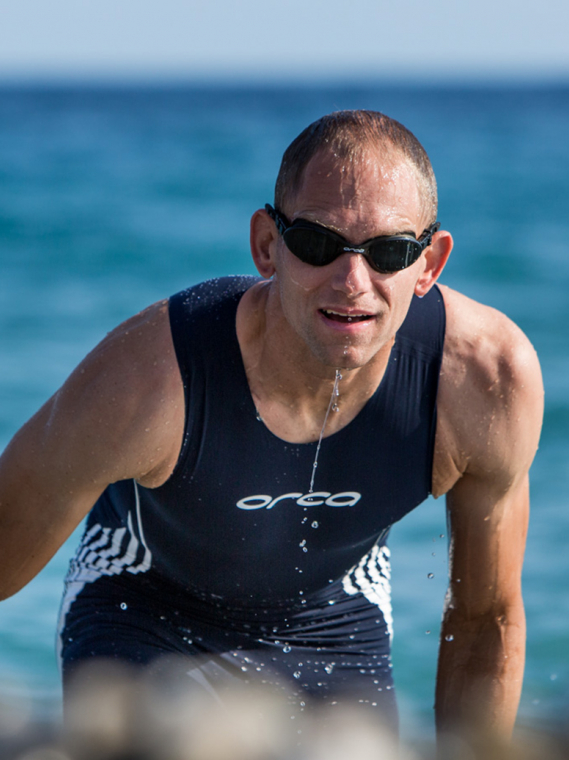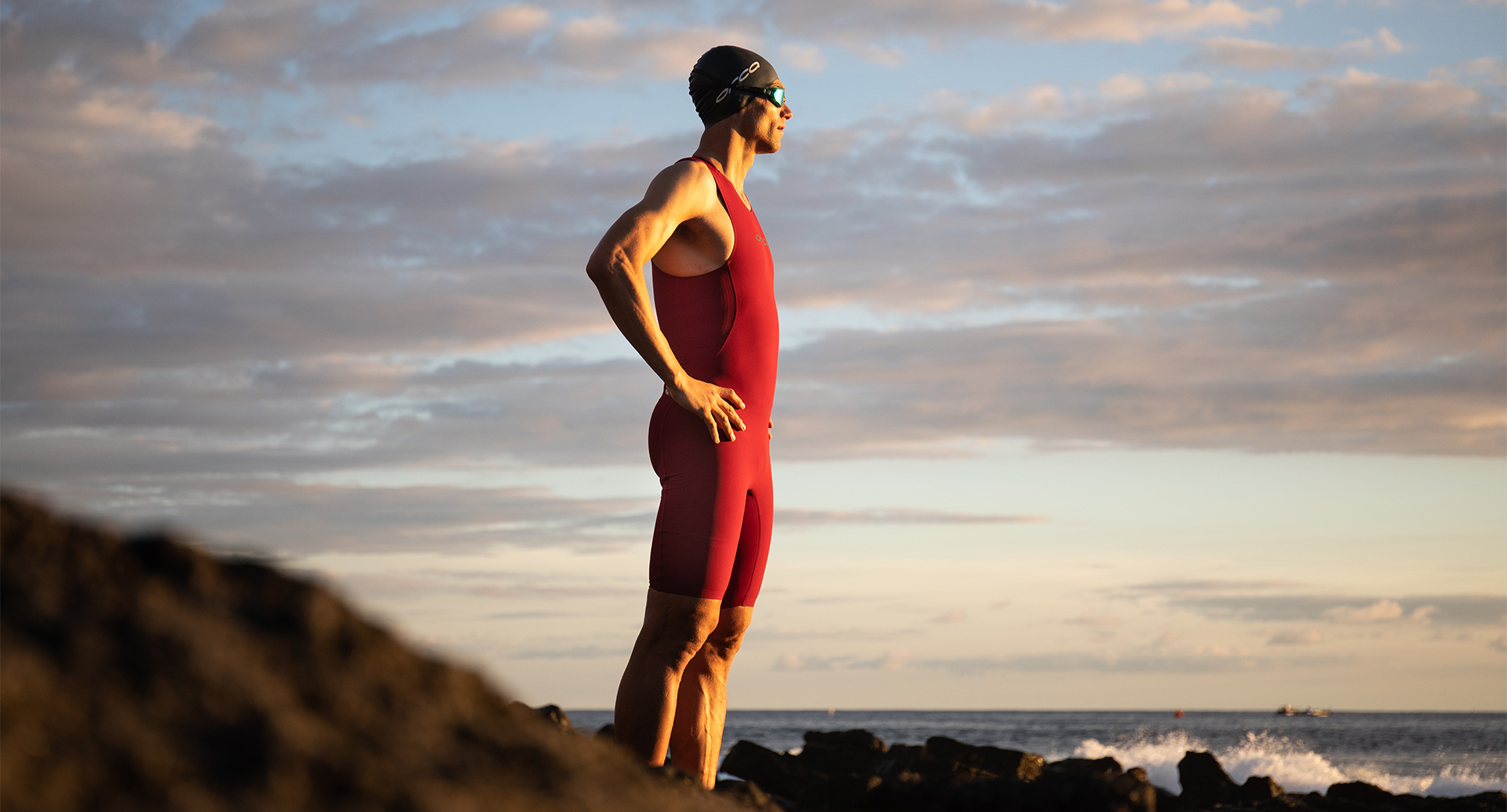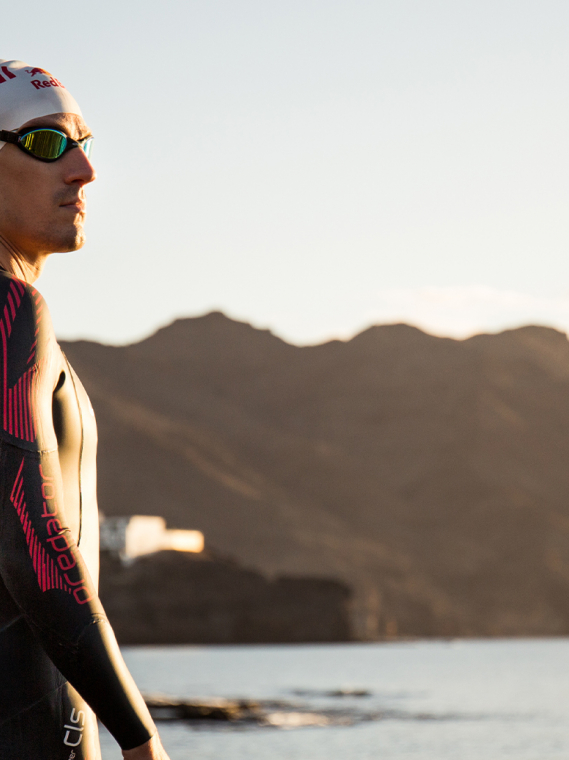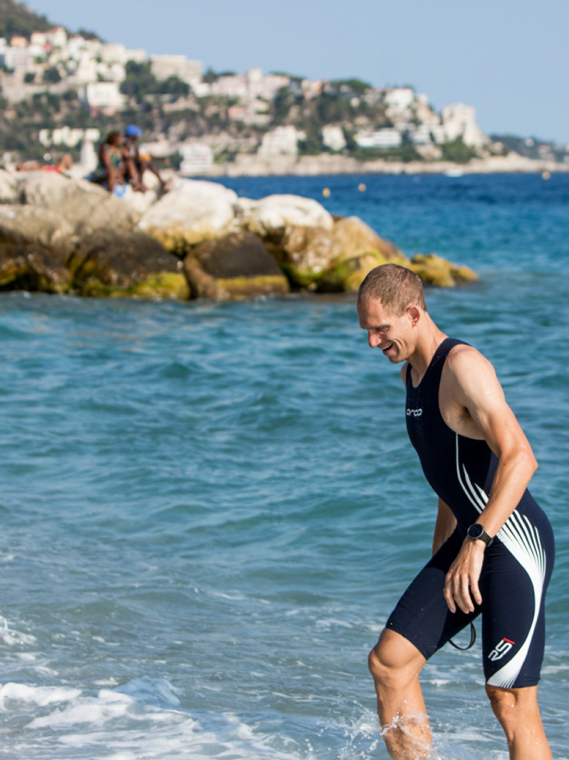Starykowicz tells us about his experience in participating in the famous SwimRun NC, which was held in November in North Carolina, USA.
ANDREW STARYKOWICZ - Professional triathlete
Flying to a race without a bike is an entirely foreign concept to me. Rolling through the airport with a roller bag packed with goggles, two pairs of run shoes, an Orca SwimRun wetsuit, paddles, & a pull buoy was the first dose of reality for the weekend.
I arrived at Hanging Rock on Friday and began to scout the venue heavily. It began at the start/finish line studying the terrain for the 1st and final runs and the last swim. Traditionally the volume of water flow was 1/3 of what it usually was. Meaning the water was 18-24" across most of the river with a few deeper spots where you could swim, and looking from the shoreline, it made sense on where you needed to go. When I tried to walk on the river bottom, it was either silt (where you sunk) or off-camber with very slippery rocks and stones. Swimming was the only option.
Then on Friday, I scouted the part of the course up by Hanging Rock Lake, including the climb up to Moore's wall. The view from the top of Moore's Wall was beautiful, and I am glad I did it before the race and got to enjoy it because I knew on race day that I would not see it nor appreciate the climbing we had done. By the time it was said and done, I had hiked more than 10 miles in 24 hours, but I had a full grasp of what the course would bring, and I could brief my teammate Jarrod Shoemaker who arrived late on Saturday on the details of the racecourse.

Race day was also daylight savings time, so Jarrod and I enjoyed sleeping in before the race. Jarrod was mainly concerned with the 50-degree water and 40-degree air temps due to a cold front that had settled over the East Coast. Personally, being a Midwesterner, I was not too concerned; that was my favorite weather.
Our race strategy was simple, Jarrod would set the pace on the runs, and I would lead the swims. We planned on heading up the 1st run, which was 4.7 miles with two waterfall climbs, in 2nd or 3rd pace and adjust from there. At the start line, it was different not knowing anybody and having no idea who was there to compete.
The race started with the entire field wearing masks, and we ran the first 1/4 mile in them before dropping them into a garbage can. The first half mile was on a gravel road which created a lot of jockeying. As we neared the single track, which would dictate the next 4+ miles, there were a lot of teams cramming it in jockeying to be in the 2nd-5th spot. So, I put my hand on Jarrod’s back and softly pushed him to the lead. I did not want to get hung up behind a slower team that went out too hard. I had hiked this trail, and I knew that the only way to pass for the next 3 miles was to "let" someone pass by. Jarrod dictated a consistent, strong, but very manageable pace on the uphill run from the river to the lake, which included more than 1000' of climbing. I wanted to go faster, but Jarrod, who has been racing adventure races since retirement from triathlon, had a better handle on how these races unfold.

We hit the first set of waterfalls, and a team darted by us, leaping through the rocks, while Jarrod and I carefully stepped up the creek bed and through the waterfalls. We made it up to the lake, 4.6 miles of single-track trekking, two waterfall traverses, and 1000' vertical in just over 40 min. Now let's get wet.
I had gone from being cold at the start to very warm when we would hit the water for the 1st time. I did not even unhook my paddle from my race belt, put my goggles on, or pull buoy between my legs for it. I forgot I had these tools and just was in savage mode. It was merely a splash of 25 yards across a bay, but it cooled the jets.
The next run was a quarter mile of single track along the lake, the prequel to the first 1/3-mile swim. So, I slowed my pace a bit and got ready for this swim. I got my paddles on my wrist, put my goggles on, and pulled my buoy between my legs as I stepped into the water. I looked over my shoulder to ask Jarrod if we were ready, and he came hauling into the water at full speed. I laughed; here we go!
The lake water was the coldest water I have swam in quite a few years. I swam the first bit heads up to stave off any shock or hypothermic reactions. I swam steadily, keeping Jarrod on my feet, and we established the lead. I got out of the water and made my way up the embankment, and the first thing out of Jarrod's mouth was, "If You See Kay (PG13), THAT'S COLD." I responded with, "It was refreshing."

It was merely another quarter mile through a ravine to the 25-yard swim again. This time I at least used my paddles which were still on my wrists from the last swim. The body temperature was coming down quickly with all these dips into the water and colder air. We ran the quarter mile to the 1/3 mile swim, and this time I flew into the water with Jarrod on my heels. As we made our way across the lake, I kept slowing down to keep Jarrod on my feet. By the end of that swim, I had thought he was struggling with cramping due to the cold.
When we got out of the water, I asked him if he was alright, and he spoke gibberish. So we stopped at the aid station, got some fuel in the body, and started running up the next segment, which was 5.5 miles up to and down from Moore's wall, 800 more feet of elevation, including 642 uneven stone steps.
When we hit the climb, we had a team hot on our heels. As we climbed the steps, I quickly passed Jarrod utilizing my bike strength, pushing down on each step like riding a TT. When we hit the observation tower, we had opened a small gap. There we had our picture taken as a requirement that you had made it to the top. Then we started the descent down the backside. We both agreed that we would take it slow and play the old bull and not the young bull. The chasing team passed us hauling tail through a section of ankle busters. They were quickly out of sight and out of mind ahead of us. Once we were down off the wall, we resumed a good tempo, but the question was, was the race still winnable?
It was time to hit the race sequence two more times. Again, we hit the 25-yard swim like bulls in a china shop utilizing none of our equipment. Then over the next quarter mile, we got all decked out for the 1/3 mile swim. The body was warm heading into the swim, so I would swim heads up to the first buoy to not supercool the body. I kept a keen eye to see the gap to the leaders, and it looked to be 200 yards. Jarrod's swim was a lot better than the last time we were in the water, and by the time we exited the water, the lead was about 75 yards. I reached back and pulled Jarrod out of the water so we would lose no time in regaining balance or bearings after the cold swim.

After we charged the 25-yard swim for the final time, I told Jarrod we needed to swim like that one more time, and we will be ahead with a gap on them. He responded with, "make sure you keep me on your feet." Like the 2nd swim on the first sequence, Jarrod started struggling midway through the swim, just as we passed for the lead. It was the first time all day; I thought maybe a bungee would have been a great idea.
I exited the water with fire in my belly and daggers in my eyes. It was just shy of 6 miles down to the final. I grabbed Jarrod out of the water, and we headed toward the cascades traverse. Jarrod's hands were so cold he could not clip his paddles onto his race belt, so I took them and hooked them on mine. We hit the cascades, and we climbed a series of ropes up the cascade walls. It was excellent, and now it was 'go time.' Heading out of the cascade trail, we saw the 3rd place team was also not far behind. It was not a two-horse race; this was a three-horse race. They were right about 2 min back, at 2.5 hours in, three teams within 2 minutes.
This downhill run segment suited us better than the previous run. It was the single track we ran up to the lake, and now we were hauling down it. We ran steady, constantly checking behind. With all the paddles on my race belt, the clanging kept making us think somebody was breathing down our necks. Finally, when we hit the bridge with the three concrete culverts, I began preparing for the final water expedition.
I followed the deep water until it disappeared and then I was trying to find it. I stood up to see if I could see the path of deep water, but it was evident that salamandering would be the most compatible and straightforward option. Since there was no immediate pressure behind Jarrod and I sculled and enjoyed the final five or ten minutes of the race. We navigated the river taking a few strokes when we could and sculled the rest, occasionally getting beached on a rock.
The final run was just 100 yards which had some nice even and level stairs up to the finish area. Jarrod and I were a little surprised that we pulled it off. Yes, we had an advantage with our on-road accolades, but there was no carbon involved in the racing we did. There was no bike. There were single-track runs and cooling swims. Jarrod taught me patience wins because going the paces I wanted to, I don't know if I would have found the finish line without significant cramping.
Swim Run is grassroots racing, just like the sport of triathlon that I fell in love with when I started 20+ years ago. When most races were unique distances, people competed to push themselves against their friends and not claim a PR or earn a slot. It is more about community. It is hard and largely self-supported other than your team and an emergency whistle. If this is something that interests you even remotely, try it. If you don't see the purpose in it, I'm sorry you are missing out.

ABOUT ANDREW STARYKOWICZ
Andrew Starykowicz has been with Orca for more than 10 years. While with us he has won several 70.3’s, Ironmans, a few of them leading wire to wire. He was the 1st American to ever go under 8 hours in an Ironman (2013). Not only does Andrew represent Orca on the race course he helps with product development keeping Orca at the forefront of speed. Keep up with Andrew on his website, AndrewStarykowicz.com, or Instagram @Starykowicz.








